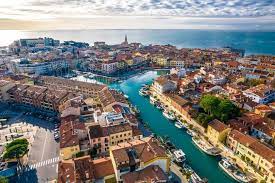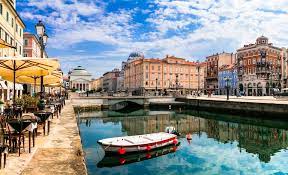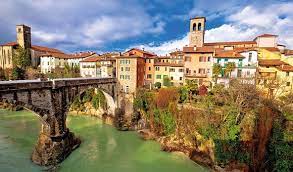Italy: How to visit this undiscovered region for free

Rebecca Ann Hughes
Rome: The northeastern region of Friuli Venezia Giulia is offering to refund visitors’ train journeys from other areas in Italy in a bid to put itself on tourists’ radars. The region is typically one of the least visited by travelers to Italy, despite having a fascinating fusion of cultures, spectacular nature from snowy mountains and paradisiacal beaches, and an exceptional wine scene.
Until May 31, 2023, the region’s tourist board, PromoTurismoFVG, will reimburse the rail fares of visitors arriving from within Italy. Journeys to the cities of Trieste and Udine and the seaside towns of Grado and Lignano Sabbiadoro are eligible for the refund. Visitors must travel back and forth from one of these five stations: Latisana-Lignano-Bibione, Cervignano-Aquileia-Grado, Trieste Airport, Trieste Centrale, or Udine.

The region hopes the initiative will promote sustainable travel while boosting visitor numbers. The only requirement for those interested in taking part is to stay two nights, which is no real hardship.
Travelers can use all trains run by Trenitalia, including regional and Intercity lines as well as the high-speed Freccia trains. Visitors need to book their complete trip, including the two-night stay at a participating hotel, either three or five days before travel depending on the destination. Upon booking, the cost of the return rail journey will be discounted from the total price.

As if a free train ride wasn’t enough, the region will also give visitors taking part in the initiative a free 48-hour FGVcard. This allows free and discounted entry to museums, free journeys on public transport and other benefits.
Friuli Venezia Giulia is a multicultural land that historically has been home to Romans, Lombards, Slavs and now Italians. In addition to Italian, some areas also speak Friulian, Slovenian, German, Venetian and even Croatian.
This multifaceted history is reflected in one of its major cities: Trieste. It stands apart from other Italian metropolia because, as it was annexed by the Austro-Hungarian empire for a period, it still exudes Austrian culture. There are cafès to rival Vienna and the vast sea-facing Piazza dell’Unità d’Italia lined with grand 19th-century palazzi. Remember to use your free FGVcard to visit the city’s museums.
Gorizia is another city that sits at the crossroads of multiple cultures. Italian, Germanic and Slav architecture, monuments and traditions can all be found here. Remember that trains arriving here are not eligible for a refund, but it is a good stopping place between Udine and Trieste, both of which qualify for reimbursement.

While southern Italy is considered Italy’s beach paradise, Friuli Venezia Giulia has two spectacular coastal resorts to tempt visitors north.
Lignano Sabbiadoro, just over the border from the Veneto region, gives access to the Adriatic sea with over 40 bathing establishments. The iconic Terrazza a Mare, a shell-shaped 60s structure on a pier, houses shops, bars and a solarium.
Grado, a little further around the coastline, is dubbed the “the sunny island” and, a little like Venice, it is scattered over a series of islands in a limpid lagoon. It is a historic spa town with a health center still offering thermal-water treatments.





